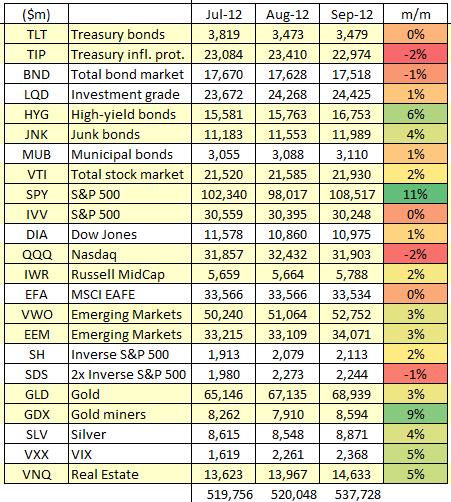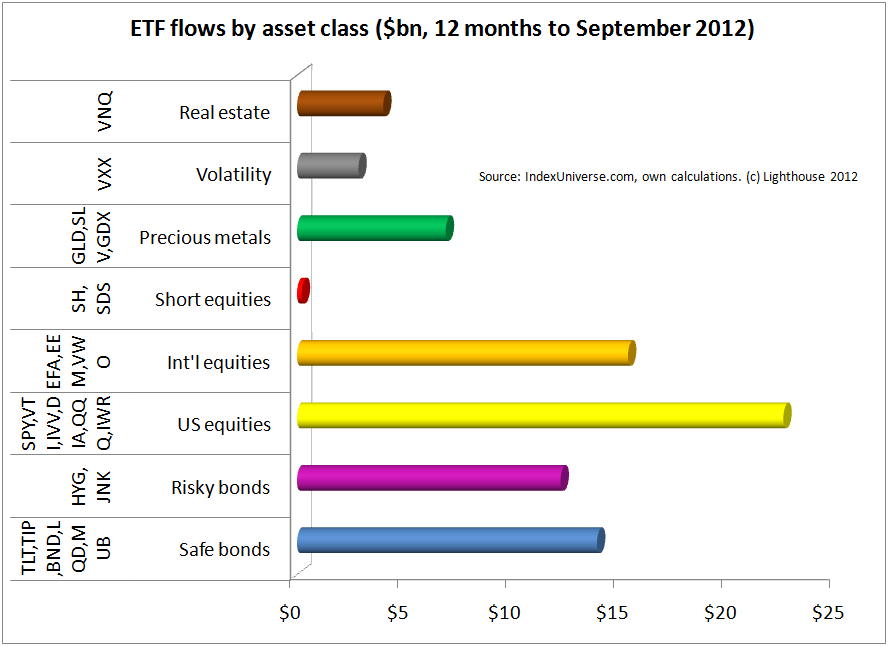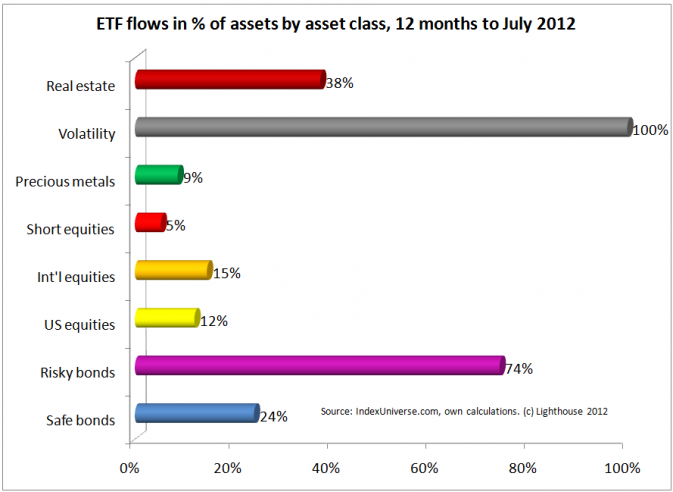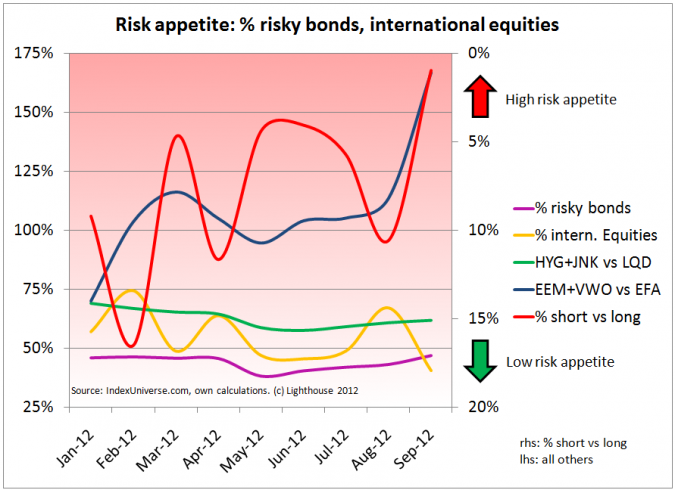Tracking flows in and out of major exchange-traded funds (ETF) can reveal investors’ risk appetite.
The 23 largest ETF’s by assets under management represent approximately 50% of all US ETF assets.
In September, the largest inflows in percent of assets were registered by domestic equity (SPY), gold mining stocks (GDX) and high yield bonds (HYG):
Source: IndexUniverse.com, own calculations. Note: we eliminate the performance effect on AuM, hence end-of-month AuM will differ from actual numbers (which include performance effect).
Largest outflows relative to assets were seen by Inflation-protected Treasuries (TIP), Nasdaq (QQQ) and 2x inverse S&P 500 (SDS).
We smooth out monthly noise by grouping ETF in asset classes and looking at flows cumulative over the last twelve months:
You will notice the dollar amount flowing into international equities coming close to the one for domestic equities, and risky bonds attracting almost as many dollars as “safe” bonds. This is an expression of investors’ risk appetite. In “risk-off”-times, investors seek to repatriate investments (rather domestic equities than international) and prefer the safety of Treasury bonds over high-yield or junk bonds.
By looking at growth in percent of assets, the picture becomes even clearer:
Risk appetite is then calculated on the basis of various ratios (all on 12-month rolling data):
% risky bonds: net flows into HYG, JNK relative to TLT, TIP, BND, LQD, MUB
% international equities: EFA, EEM, VWO versus SPY, VTI, IVV, DIA, QQQ, IWR
non-investment grade versus investment grade: HYG, JNK versus LQD
emerging markets equities versus developed markets equities: EEM, VWO versus EFA
Short equities versus long equities: SH, SDS versus SPY, VTI, IVV, DIA, QQQ, IWR.
CONCLUSION:
While US investors are less keen on international relative to domestic equities, choices within the international equity asset class and short versus long point towards a high risk appetite.
Within fixed income, risk appetite, while not at record levels, is rising since May/June as investors flock towards riskier bond ETF’s and corporates rather than Treasuries.




